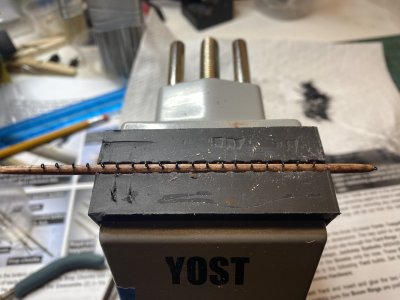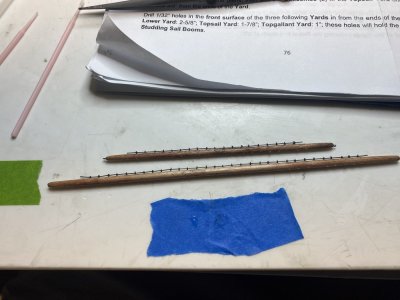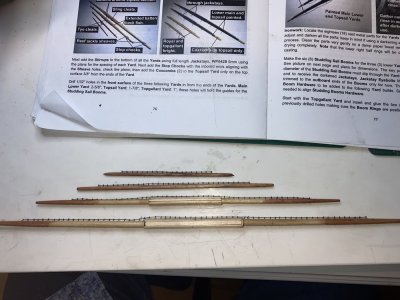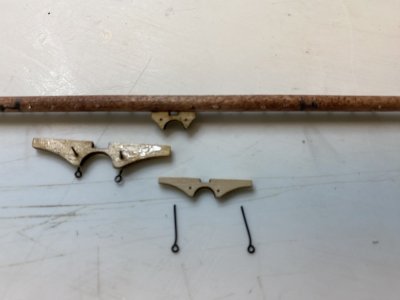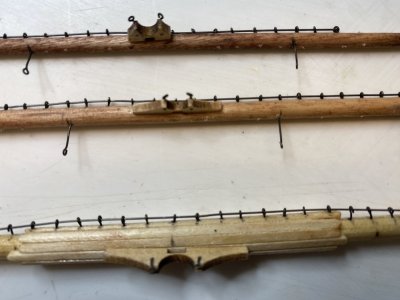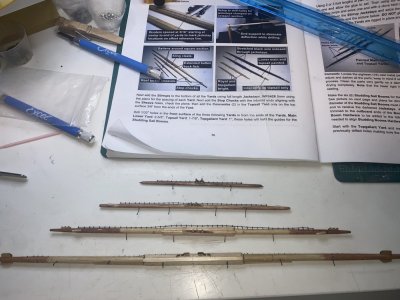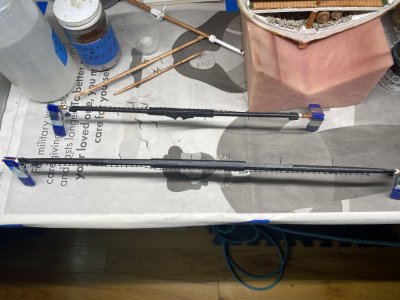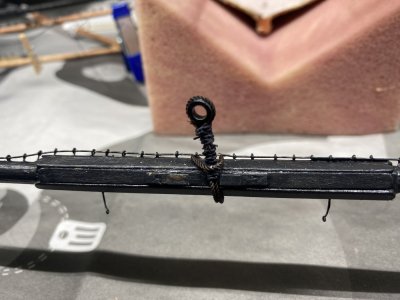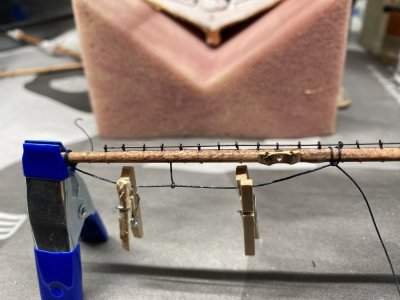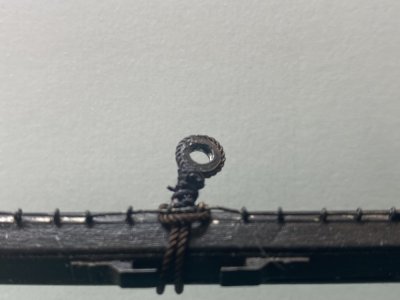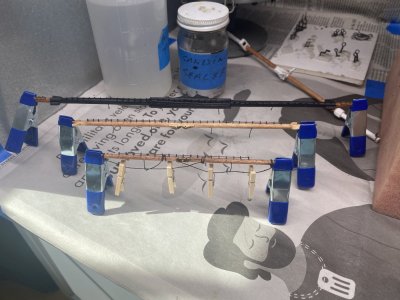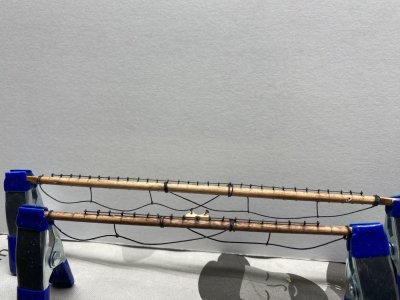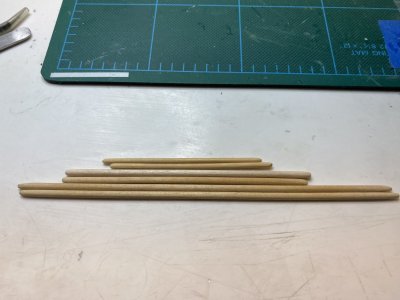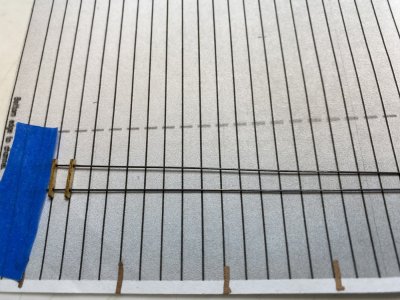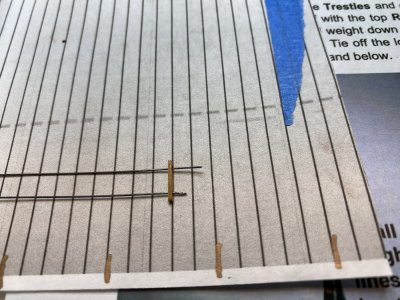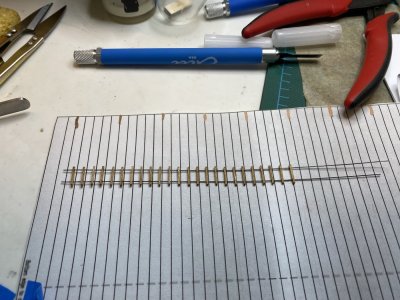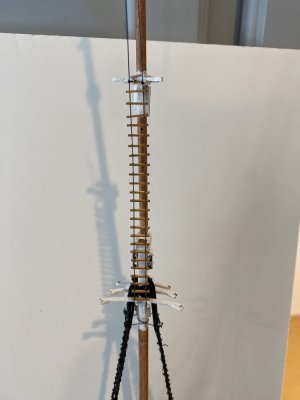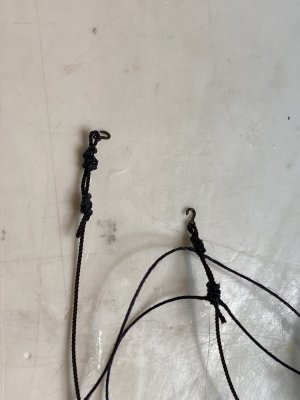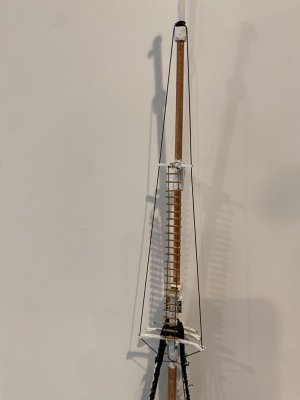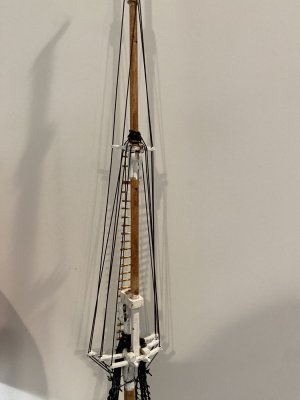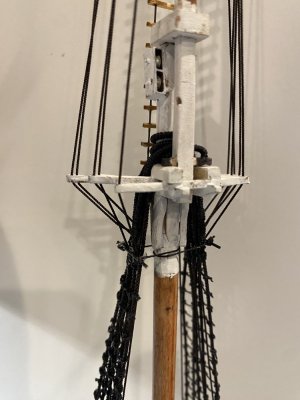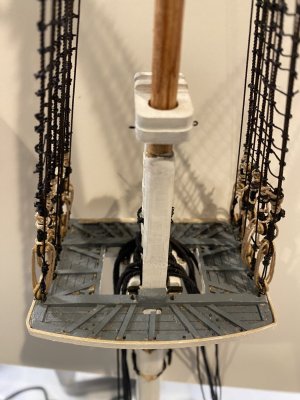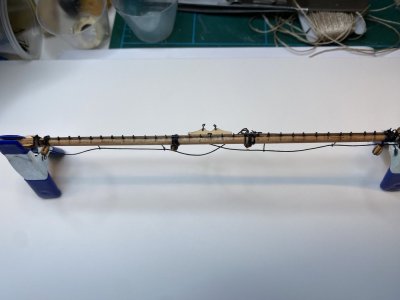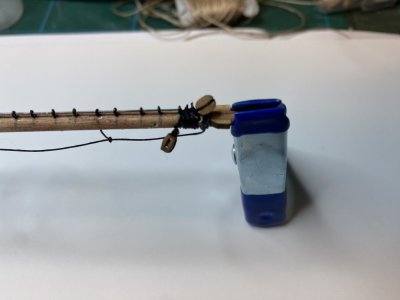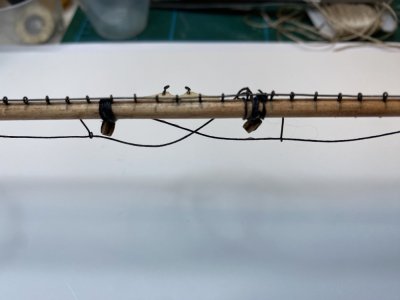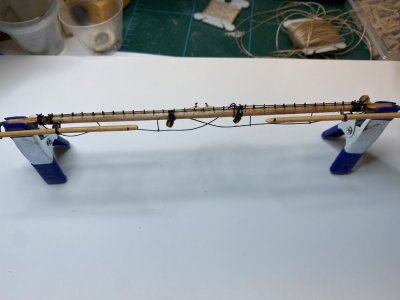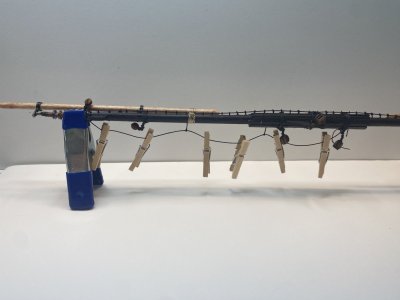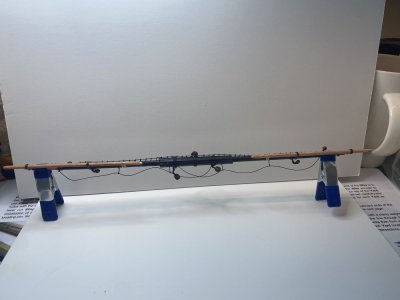I started to drill the holes for the jackstays. The spacing they suggested was the same 3/16" spacing for the ratlines so I used the ratline spacing guide instead of a dividers to space the eyebolts. Interestingly the instructions suggest the line for the jackstays be placed slightly to the rear of the top of the yards. Instructions for the full Constitution show them a bit forward of the top the yard. I have no idea which is correct. To be honest I doubt it really matters at this scale.
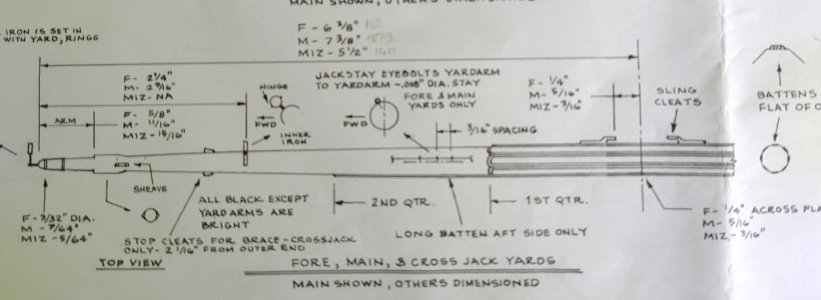
It is also a bit unclear of where the jackstays end on the topgallant yard. The ends are hidden in the drawings. There was one photo on page 77 of the instructions showing the ends of the yards and I could gauge where to stop from that. Downloading the PDF of the instructions allows you to magnify the pictures clearly and is of great help.
The instructions would have you use a drill press and X-Y table to drill the holes. I do not have either so I had to improvise a bit. After marking the lines, I secured the yards to my vise and used a small bit on my pin vise to start a small hole. After the started holes were done, I used my nail drill fitted with a 0.3mm drill bit to make the holes. This worked very well.
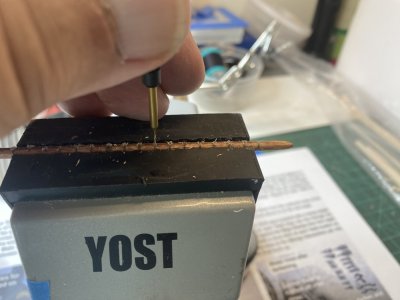
I use a set of the Arromax drill bits. They only run about $18 for a set of 10 on Amazon. They fit perfectly on my $13 nail drill and do a superb job.
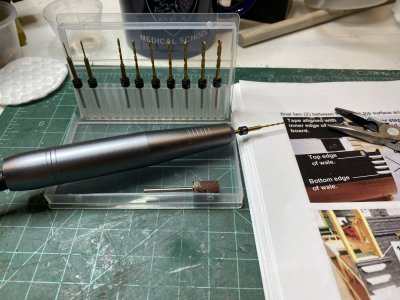
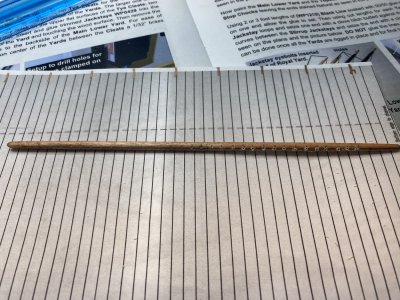

It is also a bit unclear of where the jackstays end on the topgallant yard. The ends are hidden in the drawings. There was one photo on page 77 of the instructions showing the ends of the yards and I could gauge where to stop from that. Downloading the PDF of the instructions allows you to magnify the pictures clearly and is of great help.
The instructions would have you use a drill press and X-Y table to drill the holes. I do not have either so I had to improvise a bit. After marking the lines, I secured the yards to my vise and used a small bit on my pin vise to start a small hole. After the started holes were done, I used my nail drill fitted with a 0.3mm drill bit to make the holes. This worked very well.

I use a set of the Arromax drill bits. They only run about $18 for a set of 10 on Amazon. They fit perfectly on my $13 nail drill and do a superb job.





